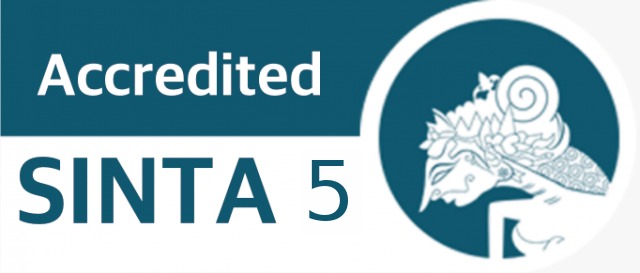PEMANFAATAN KERANGKA KERJA INVESTIGASI FORENSIK JARINGAN UNTUK IDENTIFIKASI SERANGAN JARINGAN MENGGUNAKAN SISTEM DETEKSI INTRUSI (IDS)
DOI:
https://doi.org/10.61306/jnastek.v2i3.52Kata Kunci:
DOS Attack, Network Attack, Network Scanning, Network Forensic Investigation FrameworkAbstrak
One of the media to secure computers is to apply Intrusion Detection System (IDS) technology. IDS is an early detection system in the event of a computer network attack. The IDS will alert the computer network administrator in the event of a computer network attack. IDS also records all attempts and activities aimed at disrupting computer networks and other computer network attacks. The purpose of this study is to implement IDS on network systems and analyze IDS logs to determine the types and types of computer network attacks. Logs on the IDS will be analyzed in depth to be used as an effort to improve computer network security. The research method that will be used is applied research. The research was carried out using the Network Forensic Investigation Framework proposed by Pilli, Joshi and Niyogi. The stages of the Network Forensic Investigation Framework are used to perform network simulations, analysis and investigations to determine the types of computer network attacks. The results show that the Network Forensic Investigation Framework facilitates the investigation process when a network attack occurs. The Network Forensic Investigation Framework is effectively used when the computer network has network security support applications such as IDS or others. IDS is effective in detecting network scanning activities and DOS attacks. IDS provides alerts to administrators because there are activities that violate the rules on the IDS.
Unduhan
Referensi
Uğurlu, M., & Doğru, İ. A. (2019, September). Survei tentang sistem deteksi intrusi berbasis pembelajaran mendalam. Pada tahun 2019 4th International Conference on Computer Science and Engineering (UBMK) (hlm. 223-228). IEEE.
Zhou, X., Liang, W., Li, W., Yan, K., Shimizu, S., Kevin, I., & Wang, K. (2021). Serangan musuh hierarkis terhadap sistem deteksi intrusi jaringan ioT berbasis jaringan saraf grafik. Jurnal Internet of Things IEEE.
Kumar, P., Gupta, G. P., & Tripathi, R. (2021). Desain sistem deteksi intrusi berbasis anomali menggunakan komputasi kabut untuk jaringan IoT. Kontrol Otomatis dan Ilmu Komputer, 55(2), 137-147.
Ghabban, F. M., Alfadli, I. M., Ameerbakhsh, O., AbuAli, A. N., Al-Dhaqm, A., & Al-Khasawneh, M. A. (2021, Juni). Analisis komparatif alat forensik jaringan dan proses forensik jaringan. Pada Tahun 2021 2021 2nd International Conference on Smart Computing and Electronic Enterprise (ICSCEE) (hlm. 78-83). IEEE.
Barik, K., Das, S., Konar, K., Banik, B. C., & Banerjee, A. (2021). Menjelajahi persyaratan pengguna alat forensik jaringan. Proses Transisi Global, 2(2), 350-354. DOI: https://doi.org/10.1016/j.gltp.2021.08.043
Pilli, E. S., Joshi, R. C., & Niyogi, R. (2010). Kerangka kerja forensik jaringan: Tantangan survei dan penelitian. investigasi digital, 7(1-2), 14-27. DOI: https://doi.org/10.1016/j.diin.2010.02.003
IQBAL, M., HAMDANI, M. S. H., NABABAN, A. A., FOZILJONOVA, N., WASITO, I., BENTALEB, A., ... & FIRDAUS, A. (2022). NEURO NETWORK TECHNIQUES OF TELEMETRY MULTIVARIATE TIME SERIES PROCESSING AND THEIR APPLICATIONS IN INDUSTRY. Journal of Theoretical and Applied Information Technology, 100(09).
Iqbal, M., Zarlis, M., Tulus, T., & Mawengkang, H. (2020, February). Model Pendekatan Metaheuristik Dalam Penyelesaian optimisasi Kombinatorial. In Seminar Nasional Teknologi Komputer & Sains (SAINTEKS) (Vol. 1, No. 1, pp. 92-97). DOI: https://doi.org/10.30645/senaris.v1i0.135
Sangher, K. S., & Singh, A. (2019, April). Tinjauan sistematis–optimasi algoritma deteksi intrusi untuk analisis dan investigasi forensik jaringan. Pada Konferensi Internasional 2019 tentang Otomasi, Komputasi dan Manajemen Teknologi (ICACTM) (hlm. 132-136). IEEE.
Unduhan
Diterbitkan
Cara Mengutip
Terbitan
Bagian
Lisensi
Hak Cipta (c) 2022 Jurnal Nasional Teknologi Komputer

Artikel ini berlisensiCreative Commons Attribution-ShareAlike 4.0 International License.
HAK CIPTA
Hak cipta atas artikel apapun pada Jurnal Nasional Teknologi Komputer (JNASTEK) dipegang penuh oleh penulisnya dibawah lisensi Creative Commons Attribution-ShareAlike 4.0 International License.
1. Penulis mengakui bahwa Jurnal Nasional Teknologi Komputer (JNASTEK) berhak sebagai yang mempublikasikan pertama kali dengan lisensi Creative Commons Attribution-ShareAlike 4.0 International License - CC BY-SA.
2. Penulis dapat memasukan tulisan secara terpisah, mengatur distribusi non-ekskulif dari naskah yang telah terbit di jurnal ini kedalam versi yang lain (misal: dikirim ke respository institusi penulis, publikasi kedalam buku, dll), dengan mengakui bahwa naskah telah terbit pertama kali pada Jurnal Nasional Teknologi Komputer (JNASTEK).
LISENSI
Jurnal Nasional Teknologi Komputer (JNASTEK) diterbitkan berdasarkan ketentuan Creative Commons Attribution-ShareAlike 4.0 International License. Lisensi ini mengizinkan setiap orang untuk menyalin dan menyebarluaskan kembali materi ini dalam bentuk atau format apapun, menggubah, mengubah, dan membuat turunan dari materi ini untuk kepentingan apapun, termasuk kepentingan komersial, selama mereka mencantumkan kredit kepada Penulis atas ciptaan asli.




















